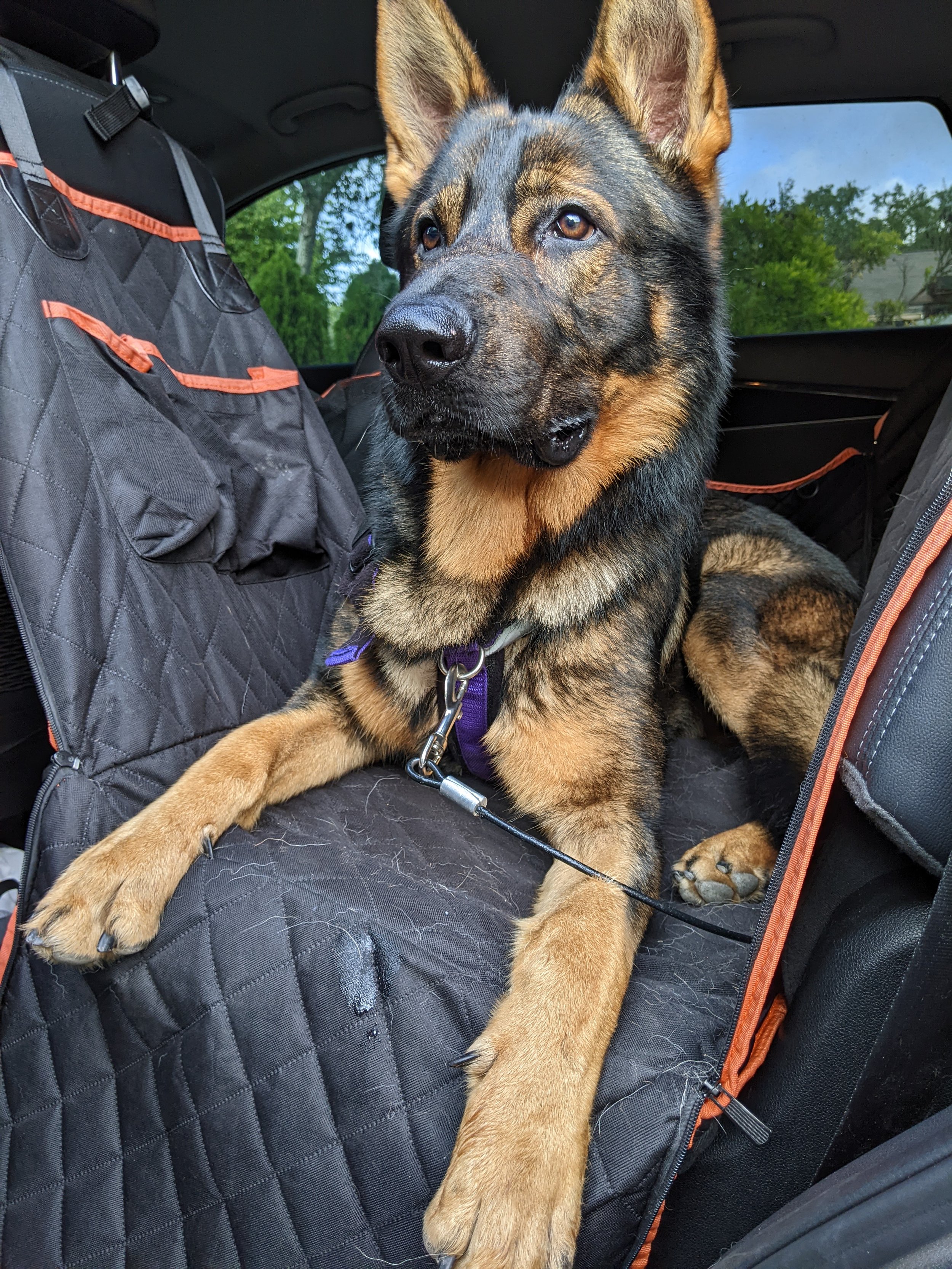What your dog trainer wishes you knew about your dog's fear of the car
Earlier this year, a client and I were discussing their dog’s troubles in the car and some possible solutions. They wondered if short trips to some fun activity would help.
What we do about car issues depends a LOT on why the dog isn’t enjoying car rides.
Possibility #1: Motion Sickness
Some dogs don’t like riding in the car because it makes them nauseous. Over time, you may see your dog become more and more averse to even approaching the car because the car itself has become “contaminated” in the dog’s mind: “I feel awful in that thing so I don’t want to get anywhere near it.”
Pro Tip: just because your dog hasn’t vomited doesn’t mean he’s not nauseous! Does he drool? That can be a sign of nausea.
Possibility #2: “Emotional” Distress or Anxiety
Sometimes there's something about car travel that makes the dog “emotionally” uncomfortable: feel anxious, nervous or otherwise distressed. They aren’t nauseous, but they definitely aren’t enjoying it.
You may or may not know what caused your dog’s distress. That’s okay.
The important thing is to know when your dog starts getting uncomfortable now. Is it when you put the leash on? Pick up your keys? Approach the car?
Be very sensitive to this as we humans often miss the subtle signs of distress.
Possibility #3: Physical Pain
Although I would expect to see physical pain present as a reluctance to approach or load (especially if your dog is large enough that he has to climb or jump in on his own) versus distress while riding, it can’t be overlooked!
Be careful assuming that pain isn’t a factor because your dog walks/runs fine, or wants to play, or can jump in sometimes but not others, etc.
Pain always needs to be ruled out when addressing behavior problems!
What can be done?
In the case of motion-sickness, as someone who gets motion-sick, I can tell you that it wouldn’t matter if you took me around the corner to get ice cream every day for a month, I would still have motion-sickness at the end of that treatment.
Fun trips do not cure motion-sickness (or physical pain).
Adding fun doesn’t solve my motion-sickness because a lack of fun doesn’t cause my motion-sickness.
(Now, I might be so anxious about my destination that I get nauseous, but that’s not motion-sickness. That’s emotional distress; see below.)
What about emotional distress? Fun is definitely the solution there because the dog needs to change how he’s feeling.
Yes, but timing is crucial.
If your dog starts struggling when it’s time to jump into the car, any attempts to make the whole process fun need to start BEFORE that point. Maybe when he first sees the car.
If you wait until after that point (i.e. drive 5 minutes to the park), the dog has already decided rides aren’t fun. He’s already experienced the emotional distress.
Lastly…
If you aren’t sure whether your dog’s problems stem from motion-sickness, or something else, or a combination of motion-sickness and something else, I urge you to talk with your vet about pharmaceutical support for the motion-sickness sooner rather than later. Why?
What starts out as a motion-sickness problem can turn into an “emotional” problem if not treated as the dog learns the car is an awful place.
If there is a nausea element, you’re best off getting that eliminated ASAP before it contaminates the car ride any further.

